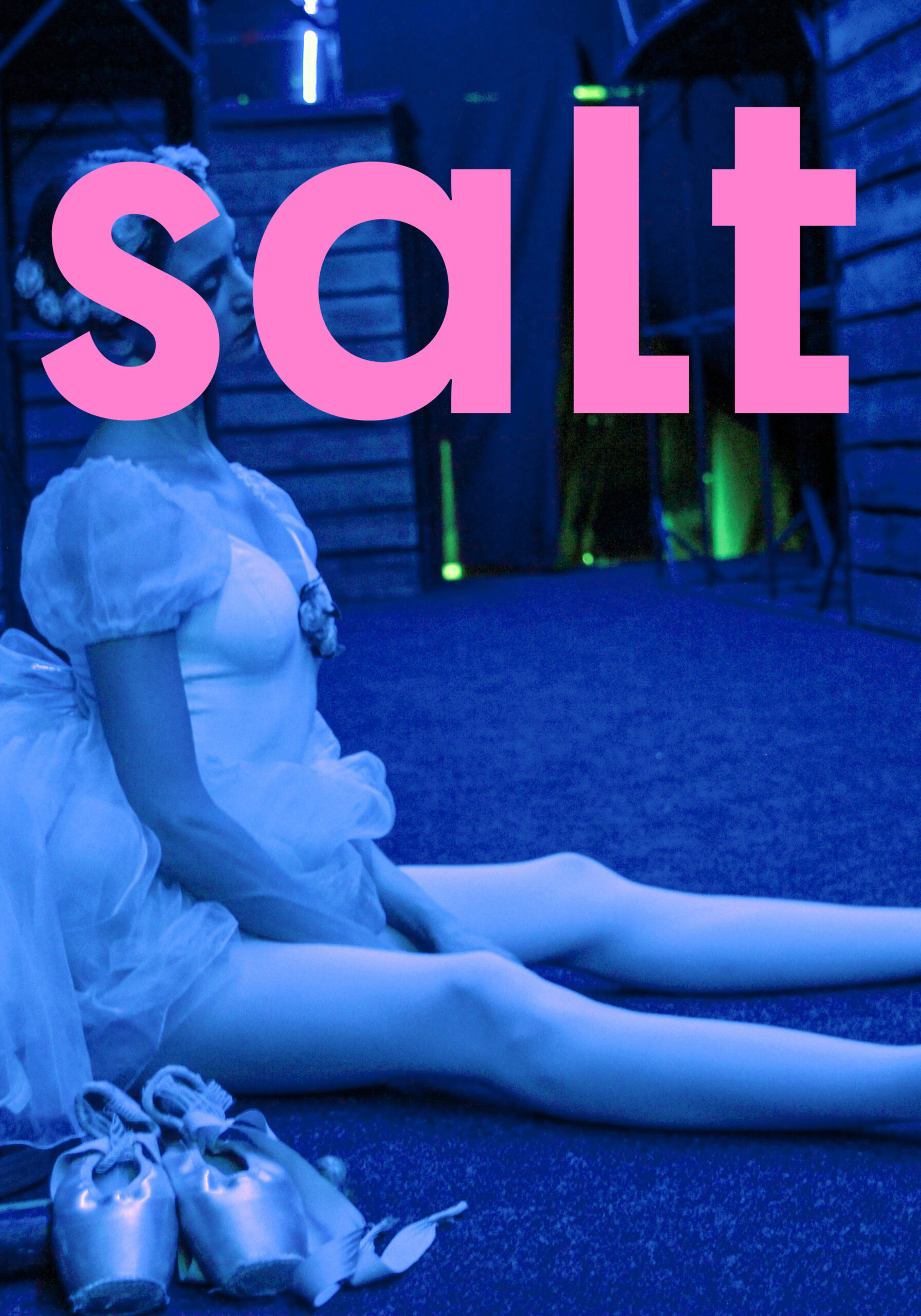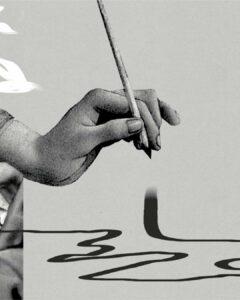
Listen to the article.
The hum of the blow dryer fills the cozy salon, mingling with the scent of hair products and freshly brewed coffee. With a meticulous eye, the hairdresser wields his scissors, transforming the client’s hair with artistry honed through years of experience abroad. His warmth and friendliness, rooted in Middle Eastern hospitality, puts the client at ease as she sips her coffee during the transformation.
Lebanese and Syrian Armenian repatriates are known for their flavorful contributions to Armenia’s dining scene—but they’re also shaping its beauty industry with their unique artistry and charm.
In Lebanon, hairdressing is largely a male-dominated profession, reflecting broader cultural gender norms. While men typically work as hairdressers, women are more often employed in other beauty services, such as manicures and nail art. These patterns are reinforced by culturally informed assumptions—many women reportedly prefer male hairdressers, believing that men better understand women’s aesthetic preferences. In neighboring Syria, the dynamics are somewhat different. Although men also dominate the hairstyling industry, this is primarily due to low female labor force participation, shaped by longstanding cultural norms that confine women’s roles to the domestic sphere. According to World Bank data, only 14.1% of Syrian women were employed in 2023, compared to 63.6% of men.
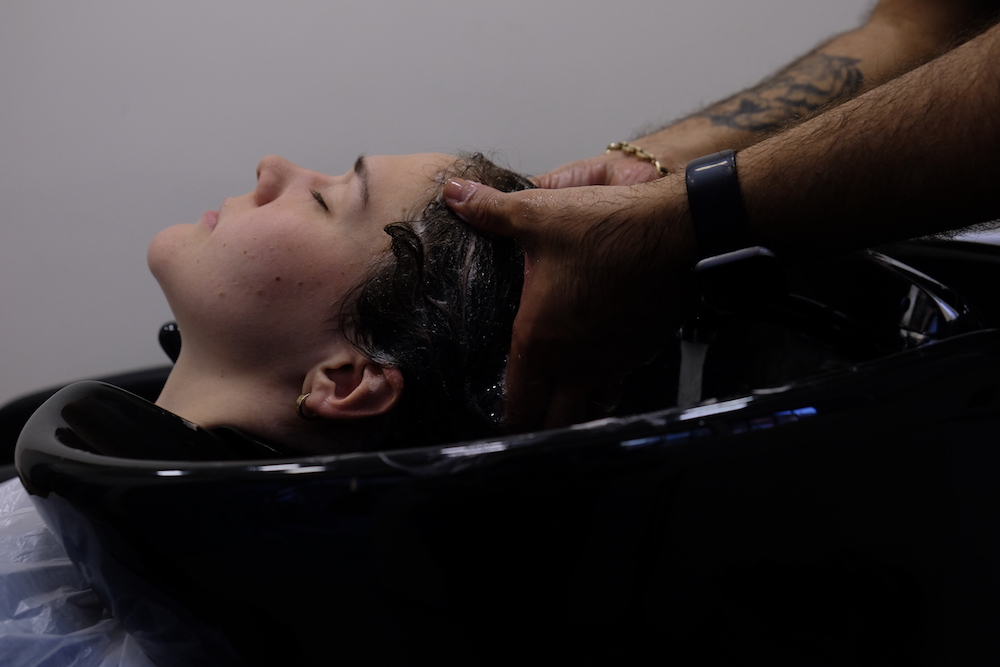
Since the 2000s, waves of repatriates from Syria and Lebanon have relocated to Armenia, bringing with them a wealth of talent. One of their most notable contributions has been to Armenia’s dining scene, where Syrian and Lebanese Armenians have introduced Levantine cuisine, spicing up the local industry. By establishing restaurants, kiosks, and bakeries, they have enriched Armenian cuisine.
Beyond food, Syrian and Lebanese Armenians have transformed Armenia’s beauty industry with their rich expertise in hairstyling and coloring, drawing from years of experience working in the competitive Middle Eastern market.
One such trailblazer is Koko Kalayjyan, a repatriate from Aleppo who moved to Armenia in 2012, at the onset of the Syrian war. After settling in Yerevan, he conducted market research, which included visits to local hair salons to identify and “fill the gaps in the market.” In 2015, he co-founded Koko Kalayjyan Hair & Care. While his salon employs both male and female hairdressers, the men—primarily from the Middle East—outnumber the women, reflecting Syrian cultural norms.
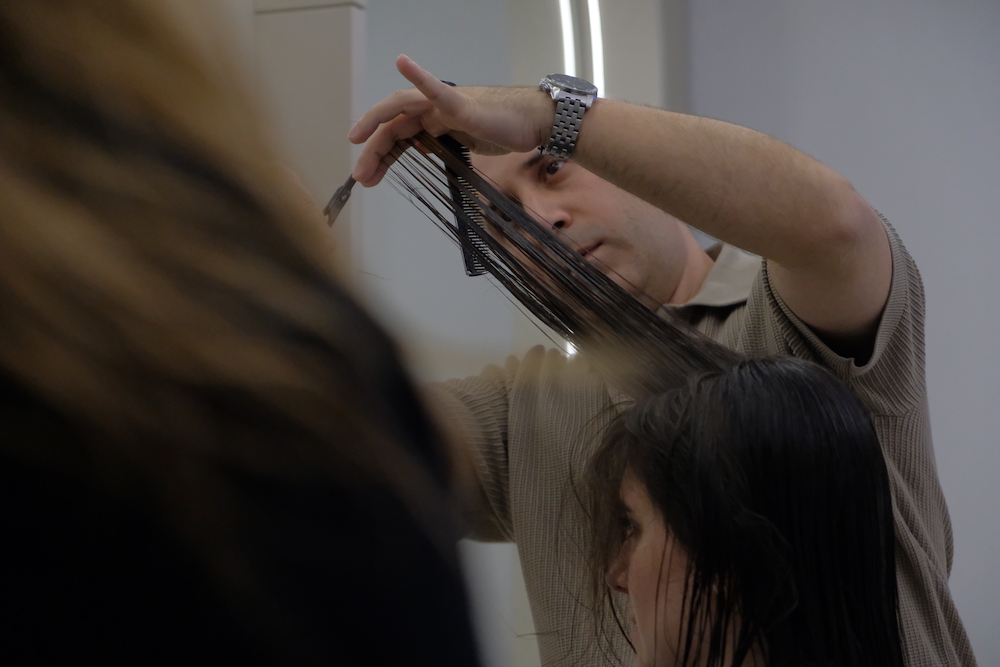
Koko Kalayjyan.
Drawing from 25 years of experience, mainly in Syria, Kalayjyan has quickly earned a reputation in Armenia for his expertise in hairstyling, coloring and bridal packages. “It took about six months for people to know me and trust my work,” he recalls, attributing his early success to word-of-mouth recommendations.
Similarly, Jack Tekeyan, who repatriated from Beirut, Lebanon, opened his salon, Jack Tekeyan Hairdresser, in 2017. Having spent over 35 years in Lebanon’s beauty industry, he relocated to Armenia with his family for a fresh start. “We wanted to be in our motherland,” he says.

Jack Tekeyan.
Hagop Katrjian, co-founder of Mood Beauty Studio, brought nearly two decades of experience when he relocated to Armenia in 2018. After starting his career as a hairdresser in Aleppo in 2007, he moved to Lebanon during the Syrian Civil War, where he continued to refine his skills. Despite others’ initial skepticism about employment opportunities in Armenia, Katrjian took a chance. “Originally, I came for a month, and I ended up staying here for six years,” he says. His team, now comprising eight Lebanese and Syrian male hairstylists, has successfully carved out a niche in the local beauty industry.
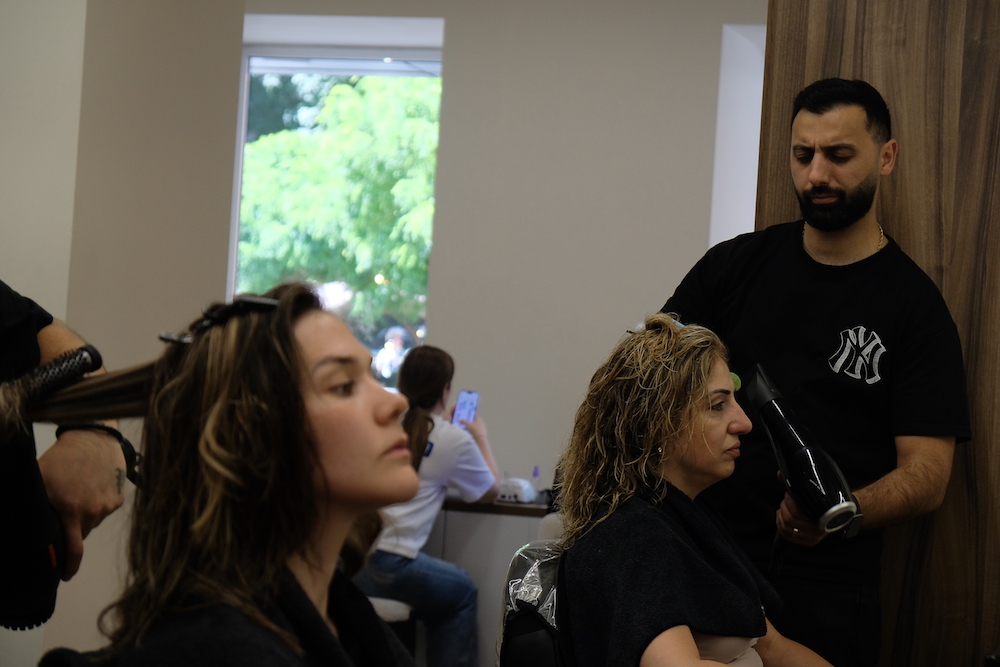
Hagop Katrjian.
Tekeyan, Kalayjyan, and Katrjian are among the hairdressers who have significantly influenced Armenia’s beauty industry, introducing global trends and contemporary techniques. “We always bring something new by offering the most up-to-date hairstyles and colors,” says Tekeyan. Kalayjyan echoes this spirit of innovation: “My specialty is creating fresh hairstyles, colors, cuts, and bridal looks.”

Their reputation for professionalism has earned them a devoted clientele. Araz Madadian, an Iranian-Armenian client, recalls her experience at Koko Kalayjyan Hair & Care, where she finally decided to try a balayage after weeks of hesitation. “I was nervous, but the staff’s friendliness and professionalism reassured me,” she says. From the thoughtful consultation to the warm hospitality and high-quality results, the experience left a lasting impression.
Goharik Martirosyan, an Armenian who returned to Armenia after years in Uruguay, offers a different perspective on the contrast between local and Middle Eastern stylists. She talks about her difficulty finding a stylist in Armenia who would listen to her needs. “I often left salons disappointed, as local hairdressers would do what they thought suited me, rather than what I asked for,” she says. “I would spend significant amounts of money and still not get the result I wanted.”
Her experience was transformed when she visited a Lebanese Armenian hairdresser who listened attentively and walked her through each step, ensuring her complete satisfaction. “It was the first time in 15 years that I felt confident and happy leaving a salon,” she says. “He suggested a slight modification to the haircut I requested, and he did exactly what I wanted.”
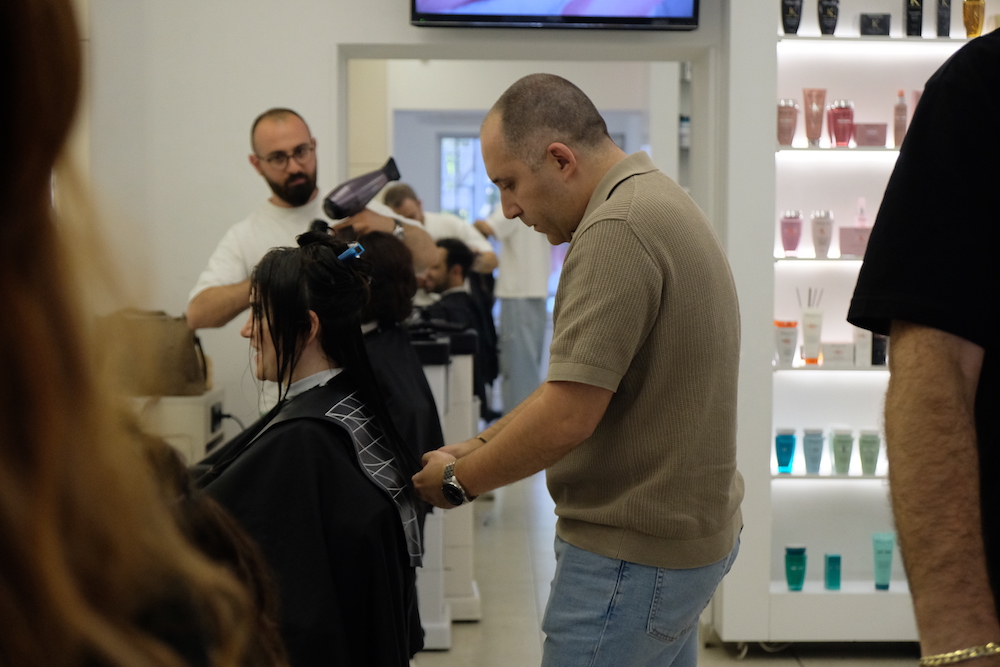
Koko Kalayjyan at Hair & Care in Yerevan.
Clients consistently praise the skill and warm, attentive service of Syrian and Lebanese Armenian hairdressers—hallmarks of Middle Eastern hospitality. “Syrian and Lebanese hairdressers prioritize customer service, so visiting their salons feels like an experience in itself,” says a Lebanese-Armenian repatriate. She adds that speaking a shared language helps her communicate her preferences with ease: “I always get exactly the haircut I had in mind.”
Prices differ significantly between Syrian and Lebanese Armenian hairdressers and local salons in Yerevan’s center, varying by type of service and salon reputation. Syrian and Lebanese hairdressers—including Koko Kalayjyan and the hairdressers at Haze (a salon employing Lebanese, Syrian, and Russian stylists)—typically charge higher prices for their services. For example, a woman’s haircut at Haze can go for 10,000 to 20,000 AMD, depending on the stylist’s expertise, while local salons like CMYK and Image Code charge between 3,000 and 8,000 AMD. This price gap extends to specialized services: Syrian and Lebanese hairdressers charge from 40,000 to 150,000 AMD for balayage and highlights, compared to 30,0000-70,000 AMD at some local salons. While local establishments like Agapi Mou Beauty World offer competitive rates for basic services such as haircuts and blow-dries, their more complex offerings—such as creative coloring—can rival the upper price ranges of their Syrian and Lebanese counterparts. Many local salons require in-person consultations for precise price quotes, taking into account factors like hair length and thickness.
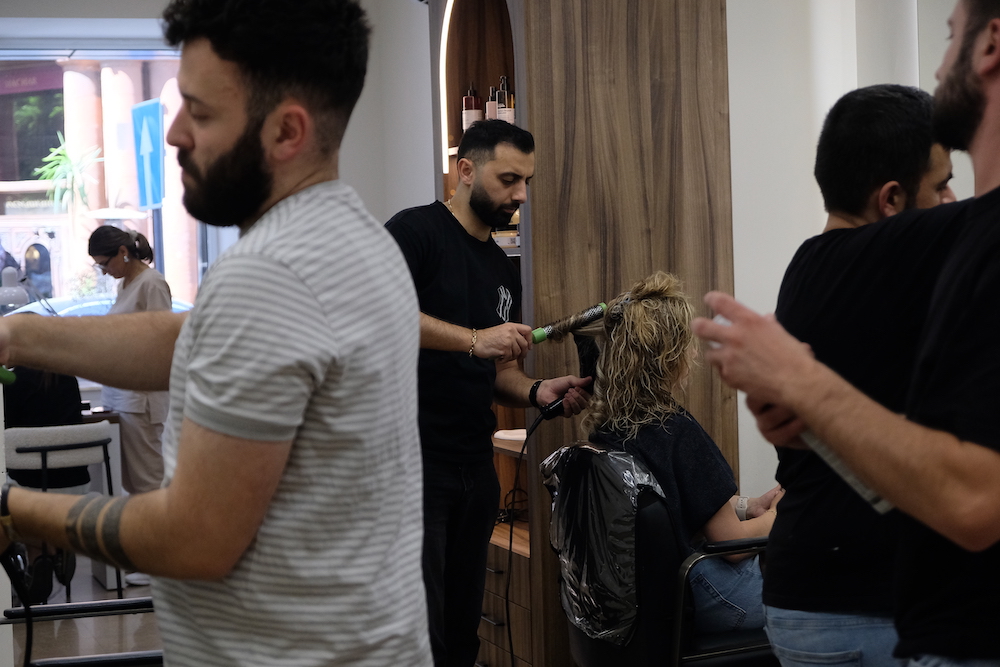
At Mood Beauty Studio in Yerevan.
The variation in pricing reflects differences in expertise, service quality, and the overall salon experience, with Syrian and Lebanese hairdressers widely recognized for their premium services and strong emphasis on customer satisfaction. At Koko Kalayjyan Hair & Care, Araz Madadian admits her balayage cost more than at other salons—“but I got what I paid for,” she says, noting she was so pleased she returned for another treatment. Nelly Tadevosyan believes the pricing is justified by the high standard of service: “If we compare their rates to those of high-end salons, it would be wrong to say they’re overpriced.” A recent client at Mood Beauty Studio also finds the prices fair: “For a cut and style, I pay 5,000 AMD. I love the result and always leave happy.” She notes her previous salon charged 1,000–2,000 AMD less, likely due to its location outside central Yerevan.
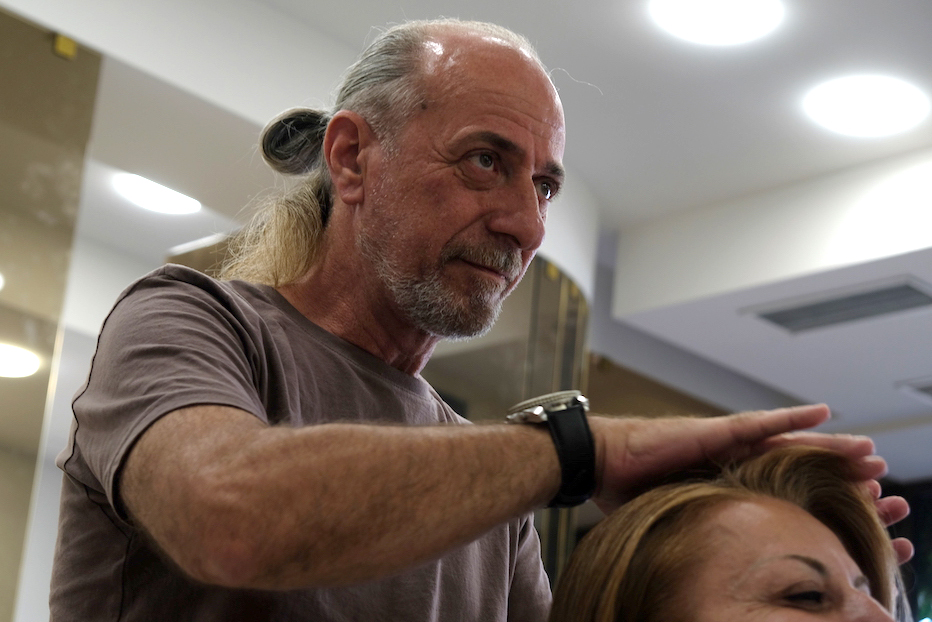
Jack Tekeyan putting on the final touches.
The influence of Lebanese and Syrian Armenian hairdressers in Armenia extends far beyond hairstyling. Through their exceptional skills, client-focused approach, and distinctive Middle Eastern warmth, they have established a new standard in the beauty industry. Their ability to blend global trends with local preferences has gained the trust of clients. With each snip and warm smile, they have transformed the salon experience in Armenia.
Photographs by Lilith Margaryan.
Under the Open Sky
The June issue of SALT explores how tradition and reinvention meet across culture, style and taste. We look at the growing comeback of film photography through the lens of Yerevan’s photo labs, feature a visual story of open-air ballet performances in Tumanyan Park, visit Hummus Kimchi, a restaurant blending Jewish and Korean cuisines, and talk to Syrian- and Lebanese-Armenian hairdressers who are raising the bar in Yerevan’s beauty scene. Plus, a photo essay captures the energy and atmosphere of Yerevan Wine Days.
Hummus Kimchi: An Unlikely Garage Fusion
In a quiet Yerevan garage, a multicultural family reimagines identity, space and cuisine. Hummus Kimchi fuses cultural heritage with urban renewal, offering a fresh look at community, creativity, and culinary storytelling in a post-Soviet cityscape.
Read moreToes, Tutus and Twilight: Yerevan’s Ballet Fest
Yerevan Ballet Fest returned to Tumanyan Park, transforming the heart of the city into an open-air stage. With performances by the Bolshoi, Mariinsky, and local companies, the week-long festival brought world-class ballet to thousands under the summer sky.
Read moreFragile in Nature, Strong in Form: Analog Photography in Yerevan
Amid a digital age, film photography finds new life in Yerevan. This personal journey through snowy streets, underground labs, and passionate communities reveals how analog photography reemerged through creativity, limitation and human connection.
Read more
